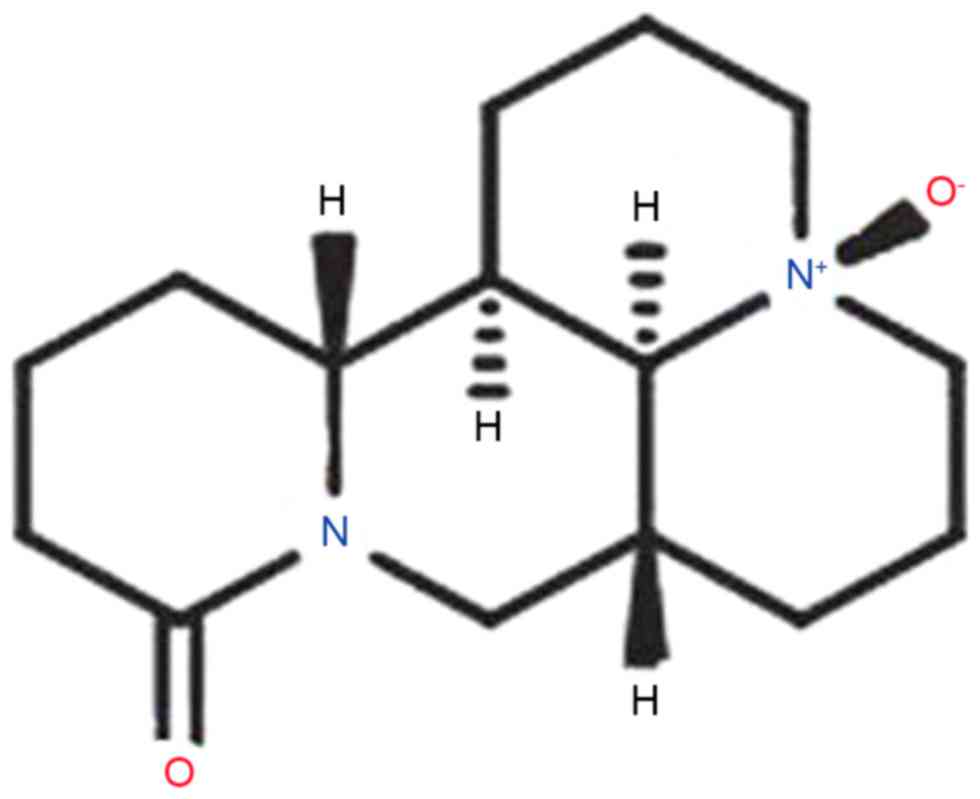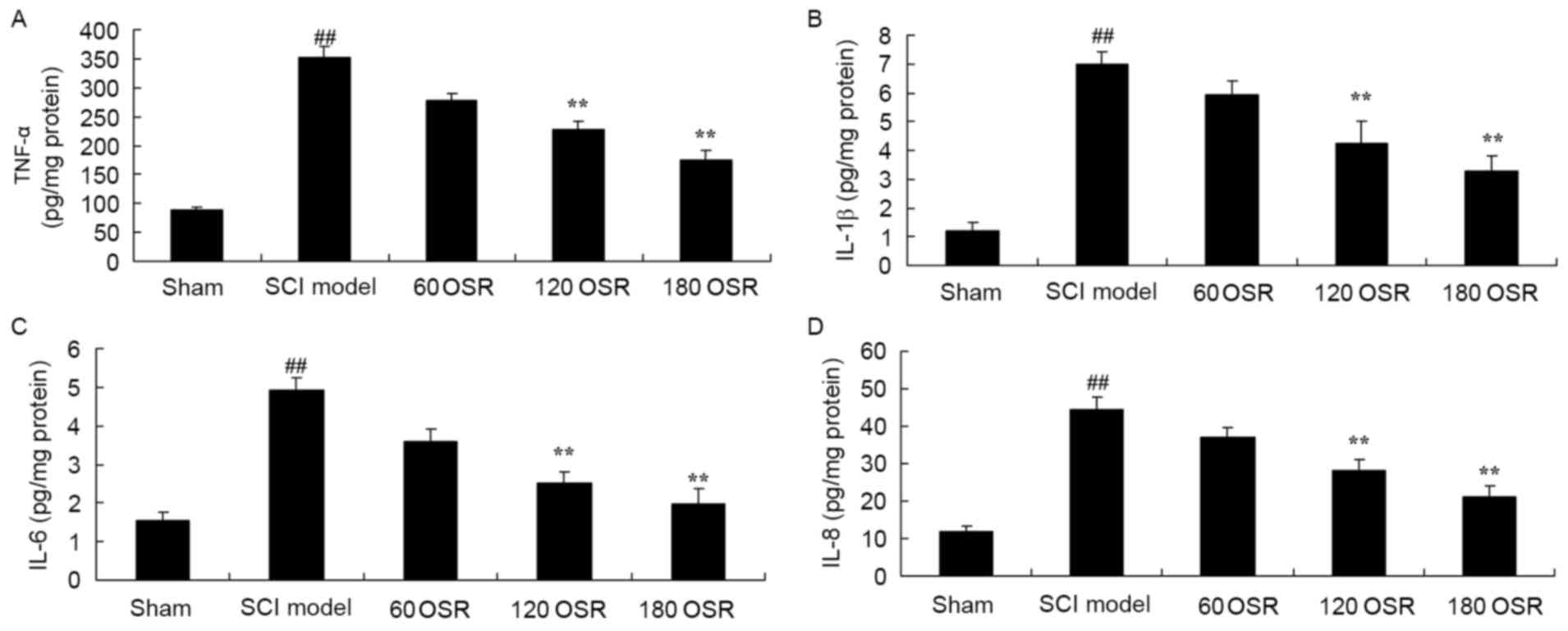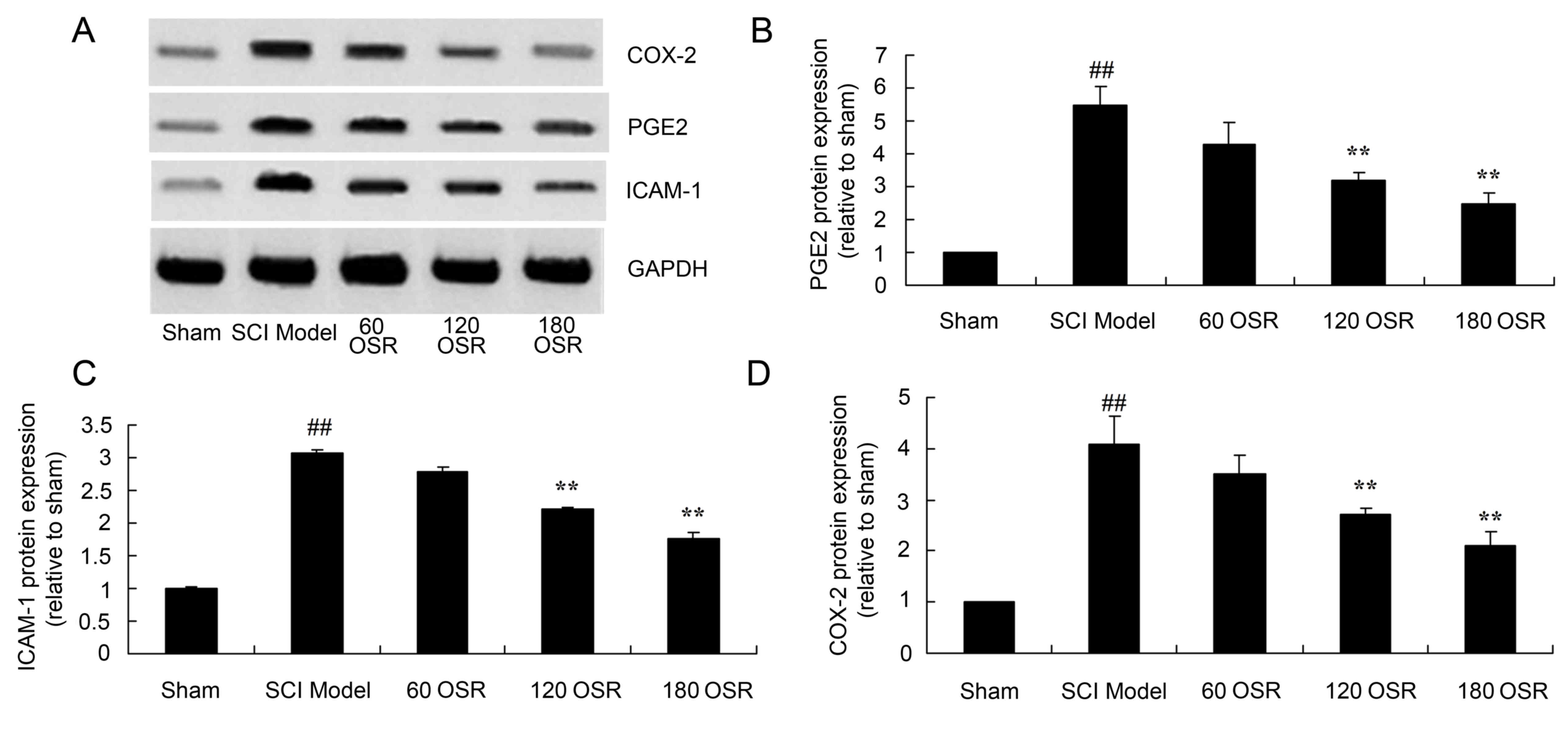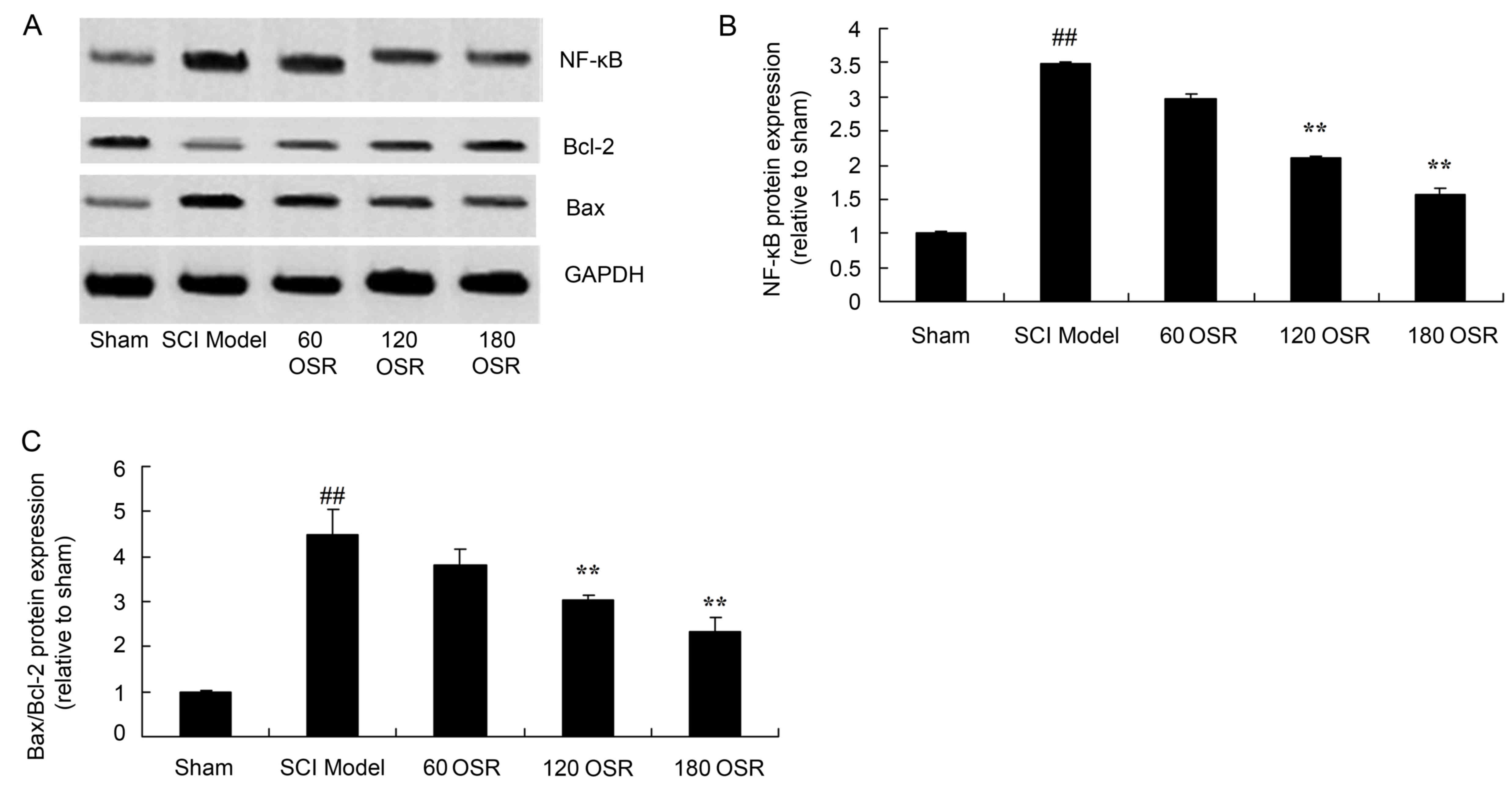|
1
|
Jones ML, Evans N, Tefertiller C, Backus
D, Sweatman M, Tansey K and Morrison S: Activity-based therapy for
recovery of walking in individuals with chronic spinal cord injury:
Results from a randomized clinical trial. Arch Phys Med Rehabil.
95:2239–2246 e2. 2014. View Article : Google Scholar : PubMed/NCBI
|
|
2
|
Richards JS, Bombardier CH, Wilson CS,
Chiodo AE, Brooks L, Tate DG, Temkin NR, Barber JK, Heinemann AW,
McCullumsmith C and Fann JR: Efficacy of venlafaxine XR for the
treatment of pain in patients with spinal cord injury and major
depression: A randomized, controlled trial. Arch Phys Med Rehabil.
96:680–689. 2015. View Article : Google Scholar : PubMed/NCBI
|
|
3
|
Spinu A, Onose G, Daia C, Panţu C,
Anghelescu A, Onose L and Mihăescu A: Intermittent catheterization
in the management of post spinal cord injury (SCI) neurogenic
bladder using new hydrophilic, with lubrication in close circuit
devices-our own preliminary results. J Med Life. 5:21–28.
2012.PubMed/NCBI
|
|
4
|
D'Amico JM, Li Y, Bennett DJ and Gorassini
MA: Reduction of spinal sensory transmission by facilitation of
5-HT1B/D receptors in noninjured and spinal cord-injured humans. J
Neurophysiol. 109:1485–1493. 2013. View Article : Google Scholar : PubMed/NCBI
|
|
5
|
Allison DJ and Ditor DS: Targeting
inflammation to influence mood following spinal cord injury: A
randomized clinical trial. J Neuroinflammation. 12:2042015.
View Article : Google Scholar : PubMed/NCBI
|
|
6
|
Li XQ, Lv HW, Wang ZL, Tan WF, Fang B and
Ma H: MiR-27a ameliorates inflammatory damage to the blood-spinal
cord barrier after spinal cord ischemia: Reperfusion injury in rats
by downregulating TICAM-2 of the TLR4 signaling pathway. J
Neuroinflammation. 12:252015. View Article : Google Scholar : PubMed/NCBI
|
|
7
|
Jiang W, Li M, He F, Bian Z, Liu J, He Q,
Wang X, Sun T and Zhu L: Dopamine D1 receptor agonist A-68930
inhibits NLRP3 inflammasome activation and protects rats from
spinal cord injury-induced acute lung injury. Spinal Cord.
54:951–956. 2016. View Article : Google Scholar : PubMed/NCBI
|
|
8
|
Jiang Y, Gong FL, Zhao GB and Li J:
Chrysin suppressed inflammatory responses and the inducible nitric
oxide synthase pathway after spinal cord injury in rats. Int J Mol
Sci. 15:12270–12279. 2014. View Article : Google Scholar : PubMed/NCBI
|
|
9
|
Ellenbroek D, Kressler J, Cowan RE, Burns
PA, Mendez AJ and Nash MS: Effects of prandial challenge on
triglyceridemia, glycemia, and pro-inflammatory activity in persons
with chronic paraplegia. J Spinal Cord Med. 38:468–475. 2015.
View Article : Google Scholar : PubMed/NCBI
|
|
10
|
Gökce EC, Kahveci R, Gökce A, Cemil B,
Aksoy N, Sargon MF, Kısa Ü, Erdoğan B, Güvenç Y, Alagöz F and
Kahveci O: Neuroprotective effects of thymoquinone against spinal
cord ischemia-reperfusion injury by attenuation of inflammation,
oxidative stress, and apoptosis. J Neurosurg Spine. 24:949–959.
2016. View Article : Google Scholar : PubMed/NCBI
|
|
11
|
Liu G, Zhao J, Chang Z and Guo G: CaMKII
activates ASK1 to induce apoptosis of spinal astrocytes under
oxygen-glucose deprivation. Cell Mol Neurobiol. 33:543–549. 2013.
View Article : Google Scholar : PubMed/NCBI
|
|
12
|
Fan LH, Wang KZ, Cheng B, Wang CS and Dang
XQ: Anti-apoptotic and neuroprotective effects of
Tetramethylpyrazine following spinal cord ischemia in rabbits. BMC
Neurosci. 7:482006. View Article : Google Scholar : PubMed/NCBI
|
|
13
|
Yarar-Fisher C, Bickel CS, Kelly NA, Stec
MJ, Windham ST, McLain AB, Oster RA and Bamman MM: Heightened
TWEAK-NF-kB signaling and inflammation-associated fibrosis in
paralyzed muscles of men with chronic spinal cord injury. Am J
Physiol Endocrinol Metab. 310:E754–E761. 2016. View Article : Google Scholar : PubMed/NCBI
|
|
14
|
Rui C, Yuxiang L, Ning J, Ningtian M,
Qingluan Z, Yinju H, Ru Z, Lin M, Tao S and Jianqiang Y:
Anti-apoptotic and neuroprotective effects of oxysophoridine on
cerebral ischemia both in vivo and in vitro. Planta Med.
79:916–923. 2013. View Article : Google Scholar : PubMed/NCBI
|
|
15
|
Meng C, Liu C, Liu Y and Wu F:
Oxysophoridine attenuates the injury caused by acute myocardial
infarction in rats through anti-oxidative, anti-inflammatory and
anti-apoptotic pathways. Mol Med Rep. 11:527–532. 2015. View Article : Google Scholar : PubMed/NCBI
|
|
16
|
Yang G, Gao J, Jia Y, Yan L, Yu J and
Jiang Y: Oxysophoridine through intrathecal injection induces
antinociception and increases the expression of the GABAAα1
receptor in the spinal cord of mice. Planta Med. 78:874–880. 2012.
View Article : Google Scholar : PubMed/NCBI
|
|
17
|
Han D, Chen S, Fang S, Liu S, Jin M, Guo
Z, Yuan Y, Wang Y, Liu C and Mei X: The Neuroprotective effects of
muscle-derived stem cells via brain-derived neurotrophic factor in
spinal cord injury model. Biomed Res Int. 2017:19726082017.
View Article : Google Scholar : PubMed/NCBI
|
|
18
|
Jan YK, Liao F, Jones MA, Rice LA and
Tisdell T: Effect of durations of wheelchair tilt-in-space and
recline on skin perfusion over the ischial tuberosity in people
with spinal cord injury. Arch Phys Med Rehabil. 94:667–672. 2013.
View Article : Google Scholar : PubMed/NCBI
|
|
19
|
Leitner L, Walter M, Freund P, Mehnert U,
Michels L, Kollias S and Kessler TM: Protocol for a prospective
magnetic resonance imaging study on supraspinal lower urinary tract
control in healthy subjects and spinal cord injury patients
undergoing intradetrusor onabotulinumtoxinA injections for treating
neurogenic detrusor overactivity. BMC Urol. 14:682014. View Article : Google Scholar : PubMed/NCBI
|
|
20
|
Wanner IB, Anderson MA, Song B, Levine J,
Fernandez A, Gray-Thompson Z, Ao Y and Sofroniew MV: Glial scar
borders are formed by newly proliferated, elongated astrocytes that
interact to corral inflammatory and fibrotic cells via
STAT3-dependent mechanisms after spinal cord injury. J Neurosci.
33:12870–12886. 2013. View Article : Google Scholar : PubMed/NCBI
|
|
21
|
Luo Y, Fu C, Wang Z, Zhang Z, Wang H and
Liu Y: Mangiferin attenuates contusive spinal cord injury in rats
through the regulation of oxidative stress, inflammation and the
Bcl2 and Bax pathway. Mol Med Rep. 12:7132–7138. 2015. View Article : Google Scholar : PubMed/NCBI
|
|
22
|
Wang S, Liu K, Seneviratne CJ, Li X,
Cheung GS, Jin L, Chu CH and Zhang C: Lipoteichoic acid from an
Enterococcus faecalis clinical strain promotes TNF-α expression
through the NF-κB and p38 MAPK signaling pathways in differentiated
THP-1 macrophages. Biomed Rep. 3:697–702. 2015. View Article : Google Scholar : PubMed/NCBI
|
|
23
|
Machova Urdzikova L, Karova K, Ruzicka J,
Kloudova A, Shannon C, Dubisova J, Murali R, Kubinova S, Sykova E,
Jhanwar-Uniyal M and Jendelova P: The anti-inflammatory compound
curcumin enhances locomotor and sensory recovery after spinal cord
injury in rats by immunomodulation. Int J Mol Sci. 17:pii: E492015.
View Article : Google Scholar
|
|
24
|
Wang YS, Li YX, Zhao P, Wang HB, Zhou R,
Hao YJ, Wang J, Wang SJ, Du J, Ma L, et al: Anti-inflammation
effects of oxysophoridine on cerebral ischemia-reperfusion injury
in mice. Inflammation. 38:2259–2268. 2015. View Article : Google Scholar : PubMed/NCBI
|
|
25
|
Li XQ, Lv HW, Tan WF, Fang B, Wang H and
Ma H: Role of the TLR4 pathway in blood-spinal cord barrier
dysfunction during the bimodal stage after ischemia/reperfusion
injury in rats. J Neuroinflammation. 11:622014. View Article : Google Scholar : PubMed/NCBI
|
|
26
|
Zhang YK, Liu JT, Peng ZW, Fan H, Yao AH,
Cheng P, Liu L, Ju G and Kuang F: Different TLR4 expression and
microglia/macrophage activation induced by hemorrhage in the rat
spinal cord after compressive injury. J Neuroinflammation.
10:1122013. View Article : Google Scholar : PubMed/NCBI
|
|
27
|
Shibata M, Murray M, Tessler A, Ljubetic
C, Connors T and Saavedra RA: Single injections of a DNA plasmid
that contains the human Bcl-2 gene prevent loss and atrophy of
distinct neuronal populations after spinal cord injury in adult
rats. Neurorehabil Neural Repair. 14:319–330. 2000. View Article : Google Scholar : PubMed/NCBI
|
|
28
|
Chen MH, Ren QX, Yang WF, Chen XL, Lu C
and Sun J: Influences of HIF-lα on Bax/Bcl-2 and VEGF expressions
in rats with spinal cord injury. Int J Clin Exp Pathol.
6:2312–2322. 2013.PubMed/NCBI
|
|
29
|
Wang TF, Lei Z, Li YX, Wang YS, Wang J,
Wang SJ, Hao YJ, Zhou R, Jin SJ, Du J, et al: Oxysophoridine
protects against focal cerebral ischemic injury by inhibiting
oxidative stress and apoptosis in mice. Neurochem Res.
38:2408–2417. 2013. View Article : Google Scholar : PubMed/NCBI
|















